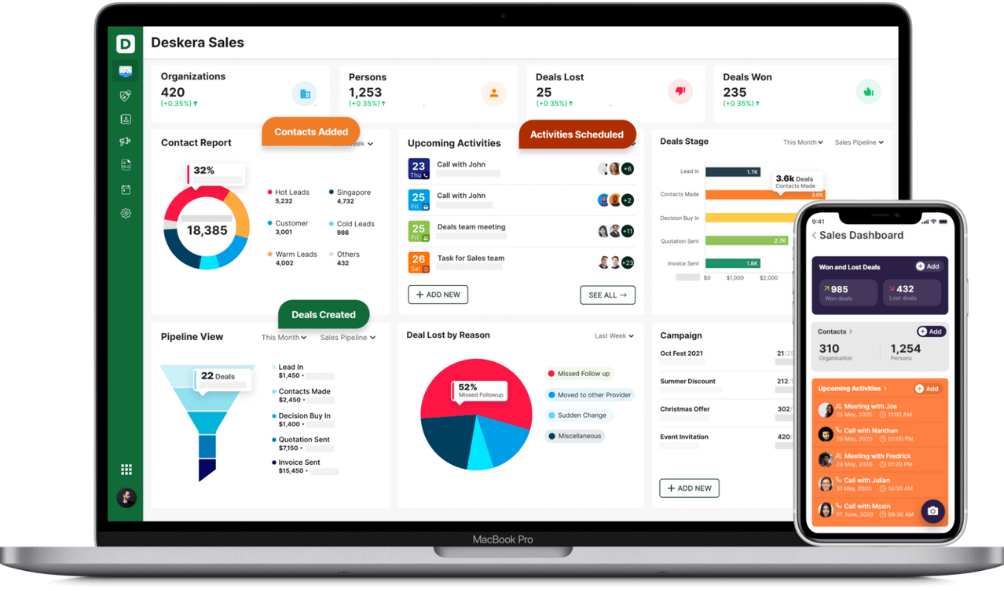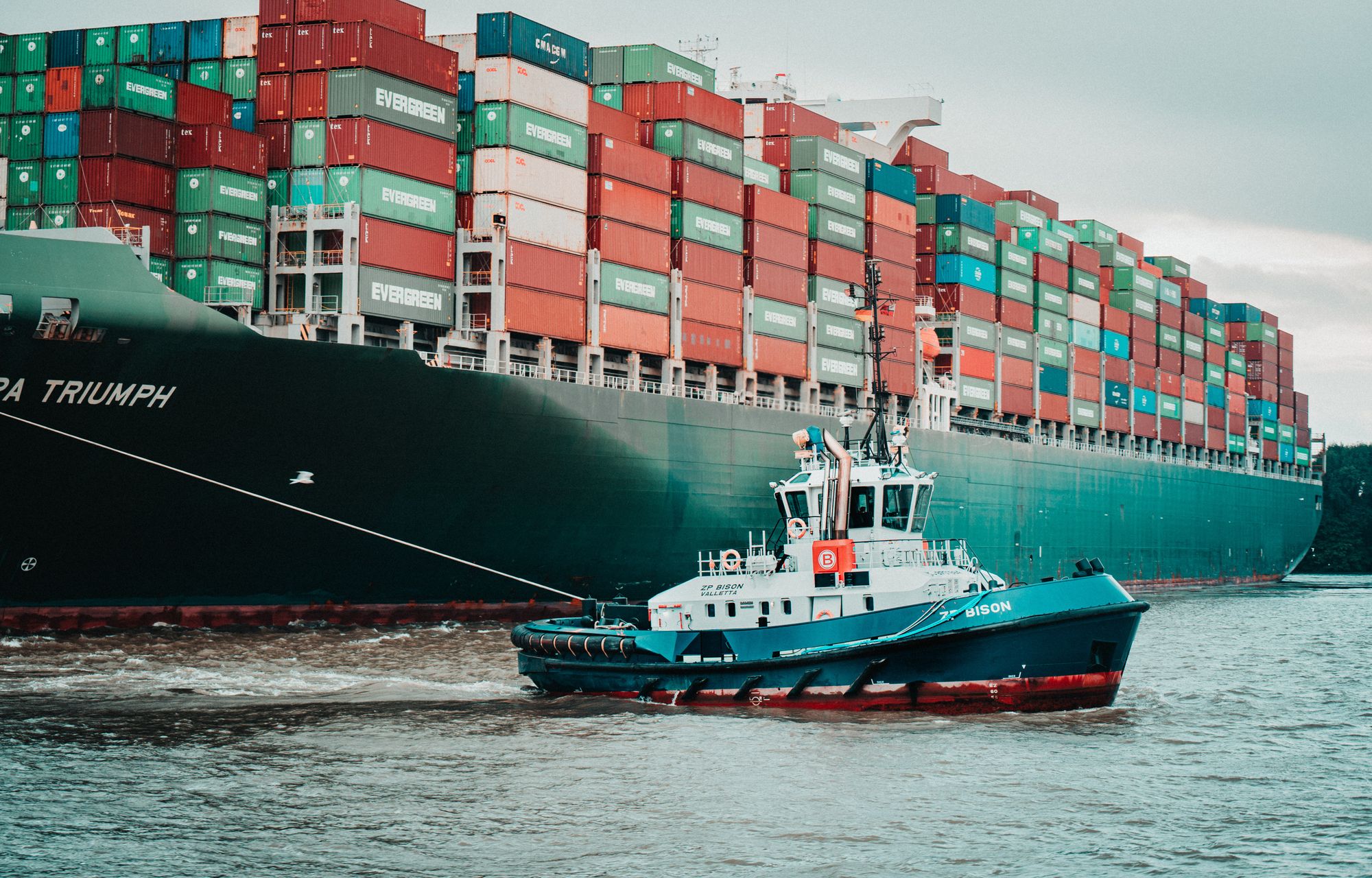Today, businesses are facing unprecedented challenges in managing their supply chains. Companies that are able to adapt rapidly and develop effective supply chain strategies will be well-positioned to succeed in the future.

The supply chain is an essential part of any business, and with the uncertain economic future due to the pandemic, having a sustainable supply chain is more important than ever. As companies navigate turbulent times, this article discusses five strategies to help them build a resilient supply chain.
Let's look in for more:
- Overview of the Current Turbulent Economic Climate
- Strategies for Building a Resilient Supply Chain
- Benefits of a Resilient Supply Chain
- Supply Chain Management Systems
- Conclusion
- How can Deskera Help You?
- Key Takeaways
- Related Articles
Overview of the Current Turbulent Economic Climate
The current economic climate is having a severe impact on supply chains. Businesses around the world have been forced to adjust their operations to accommodate the new economic realities. Companies are struggling to maintain profitability while also dealing with supply chain disruptions.
Furthermore, they also grapple with changing customer needs and expectations, and the need to reduce costs. As a result, forecasting demand is difficult.
The global pandemic has caused a significant disruption in the supply chain, creating shortages of raw materials, components, and finished products. As a result, many companies have had to adjust their supply chain strategies to ensure they are able to meet customer demands without sacrificing quality or service.

At the same time, businesses are facing increased pressure to reduce costs. This has led to a focus on optimizing supply chain operations, streamlining processes, and finding ways to reduce waste. Companies are also looking for ways to increase efficiency, such as utilizing digital technologies to automate processes and reduce manual labor.
The current economic climate has also changed consumer demands and expectations. Customers are now more focused on price and value and are increasingly looking for products and services that are sustainable and ethical. Companies must therefore adjust their supply chain strategies to accommodate these changes and remain competitive.
Finally, we are witnessing a challenging environment for businesses to secure financing. This has made it difficult for companies to invest in new technologies, upgrade existing systems, and hire new personnel. As a result, businesses must prioritize supply chain management and look for ways to make their operations more efficient.
Strategies for Building a Resilient Supply Chain
Establishing a resilient supply chain is critical to any company's success. A resourceful supply chain can adapt to changing market conditions, manage disruptions, and recover quickly from supply chain disruptions. In today's competitive global market, a strong supply chain is critical for any company's survival, and it can mean the difference between success and failure.
Let’s dive into the five strategies that can sail us through difficult times:
Leverage Technology
Leveraging technology involves implementing technological solutions to ensure that the supply chain is able to adapt quickly to disruptions and maintain a consistent flow of goods and services. This includes using sophisticated tracking technologies to monitor the status of goods in transit and utilizing predictive analytics to anticipate market trends and customer needs.
Furthermore, it facilitates utilizing automation and robotics to streamline processes. Technology can be used to improve communication between suppliers, buyers, and customers, enabling a more efficient flow of information and improved collaboration.
Leveraging technology as a strategy for building a resilient supply chain can help ensure that the supply chain is able to weather disruptions and maintain its efficiency.
Invest In Partnerships
Investing in partnerships involves building solid relationships with suppliers, customers, and other stakeholders. This strategy enables companies to have access to better information and resources that can help them respond quickly to changes in the market. It can ably facilitate identifying potential risks.

It also allows companies to take advantage of economies of scale, which can lead to cost savings. By building strong relationships with suppliers, companies can ensure that they are able to source the right materials at the right price and in a timely manner. Not to forget, it can assist with supplier management.
By investing in partnerships, companies can also ensure that their supply chain is more secure and resilient, as they can better identify risks and plan for any potential disruptions.
Establish Contingency Plans
A contingency plan is a strategy that prepares for the potential for disruptions. It involves proactively planning for the unexpected, such as natural disasters, political instability, labor strikes, and other potential disruptions. It is a great way of safeguarding businesses and creating a plan of action for how to react to these events.
This plan should include identifying alternate suppliers, establishing alternate shipping routes, and creating backup systems for manufacturing and supply chain operations. Additionally, contingency plans can also include measures for developing alternative sources of capital in the event of financial distress.
Monitor Activities
Monitoring operations essentially involves collecting data on supply chain operations and analyzing the data to identify potential risks and vulnerabilities. This allows the business to take proactive steps to mitigate the risks and vulnerabilities and make the supply chain more resilient.
By monitoring supply chain activities, businesses can better understand their supply chain and identify areas where they can improve. This allows them to make necessary changes to strengthen their supply chain and minimize the impact of any potential disruptions.
It also helps them identify areas where they can save some dollars and improve process adeptness. Additionally, monitoring activities can provide valuable insights into their suppliers. This will eventually allow them to manage their relationships better.
Build in Sustainability
Building sustainability involves assessing the impacts of supply chain activities on the environment, economy, and social well-being and then making decisions to optimize the long-term sustainability of the supply chain.
This includes focusing on resource efficiency, waste reduction, renewable energy sources, and incorporating green technologies. This includes incorporating alternative fuels and energy-efficient processes into the supply chain operations.
By building sustainability into the supply chain, companies can benefit from improved efficiency, reduced costs, and improved customer satisfaction.
Benefits of a Resilient Supply Chain
With the strategies discussed, businesses can certainly look forward to a more efficient supply chain. Yet, we must also learn why taking these steps is essential. After all, what are the businesses achieving with a resilient supply chain? In other words, let’s find out the benefits of effective supply chain strategies.
Reduced Risk
A sound supply chain reduces the risk of unexpected disruptions, as it is designed to adapt to changes in the environment and respond quickly and effectively to unexpected events. This helps to minimize downtime and losses.
Businesses can better plan for risks, enabling them to proactively manage their supply chain and reduce their overall risk exposure. This can include identifying areas where disruptions may occur, mitigating the impact of those disruptions, and maintaining the continuity of operations.
An efficient supply chain can also help businesses identify and implement strategies to reduce risk. The risks could include diversifying supply sources, improving supply chain visibility, and investing in technology.
Efficiency
An effective supply chain strategy helps to improve efficiency by reducing the time and cost associated with managing disruptions or rerouting shipments. This helps to improve overall performance and cost savings.
Companies can use a well-thought supply chain to designed to respond quickly to any disruption, such as a natural disaster, a pandemic, or a supply shortage. This ensures that goods and services are always available to customers. Also, that any disruption is minimized and short-lived.
By having an effective supply chain, businesses can significantly reduce the costs associated with disruptions and guarantee a heightened efficiency.
Agility
Agility is the ability of a supply chain to rapidly respond to changes in demand, supply, or other external factors. Resilience in a supply chain allows it to quickly and effectively respond to challenges.
This agility is a critical benefit of a resilient supply chain, as it facilitates quick response to changes in the market. Businesses can take advantage of new opportunities, and reduce the risk of supply chain failure.
Visibility
Visibility is a key benefit of a resilient supply chain. It is the ability to monitor and track the supply chain from end to end. This includes the ability to monitor and track suppliers, who provide the products or services to the business. Moreover, companies can keep track of the activities along the supply chain at all touchpoints.
With visibility, businesses have the ability to identify and predict potential risks and plan for them accordingly. This helps to ensure that supply chain disruptions can be minimized or prevented, and any resulting losses can be mitigated.
Supply Chain Management Systems
A cloud-based supply chain management (SCM) software can help to maintain an effective supply chain. Such a software can provide a comprehensive solution to manage all aspects of the supply chain including inventory, warehouse, logistics, and product lifecycles.
It can also help to track and monitor the entire supply chain network, including suppliers, vendors, and other stakeholders, as well as automate processes to reduce costs and increase efficiencies.
All solutions that companies seek to improve their SCM can be accomplished from a cloud-based system. Apart from huge cost savings and agility, the software can offer multiple advantages.
Automation: Cloud software automates mundane tasks, such as invoice processing and order entry, freeing up time to focus on more strategic activities.
Collaboration: Cloud software facilitates collaboration between different stakeholders in the supply chain, allowing them to share information quickly and easily.
Visibility: Cloud software provides real-time visibility into the supply chain, allowing companies to quickly identify any issues that arise and address them promptly.
Conclusion
In conclusion, a resilient supply chain is essential for any business to thrive in turbulent times. By implementing the five strategies discussed, companies can be better equipped to anticipate and respond quickly to disruptive events.
They will also be able to develop more strategic partnerships, increase efficiency, and reduce costs. An agile and resilient supply chain can enable a business to survive in turbulent times and thrive.
How can Deskera Help You?
Deskera can help businesses develop more sustainable supply chains by providing a platform for real-time tracking and monitoring of their entire supply chain operations.
Deskera CRM, Deskera's Supply Chain Management software, allows businesses to easily monitor and locate suppliers and customers, manage inventory levels, process orders, improve distribution networks, and more.

Deskera's business solutions that you can also use:
Deskera Books is a cloud-based financial management, invoicing, and reporting solution.
Deskera ERP is a cloud-based enterprise resource planning and automation solution.
Deskera CRM is a customer relationship management solution for managing customer data, sales, marketing, and customer service.
Deskera People is a human resource management system that handles payroll and employee benefits.
Key Takeaways
- The supply chain is an essential part of any business, and with the uncertain economic future due to the pandemic, having a resilient supply chain is more important than ever.
- Many companies have had to adjust their supply chain strategies to ensure they are able to meet customer demands without sacrificing quality or service.
- Leveraging technology involves implementing technological solutions to ensure that the supply chain is able to adapt quickly to disruptions and maintain a consistent flow of goods and services.
- Investing in partnerships involves building solid relationships with suppliers, customers, and other stakeholders. This strategy enables companies to have access to better information and resources that can help them respond quickly to changes in the market.
- A contingency plan is a strategy that prepares for the potential for disruptions. It involves proactively planning for the unexpected, such as natural disasters, political instability, labor strikes, and other potential disruptions.
- Monitoring operations essentially involves collecting data on supply chain operations and analyzing the data to identify potential risks and vulnerabilities.
- Building sustainability involves assessing the impacts of supply chain activities on the environment, economy, and social well-being and then making decisions to optimize the long-term sustainability of the supply chain.
- Reduced risk, better efficiency, and visibility are some of the benefits of an effective supply chain.
Related Articles












